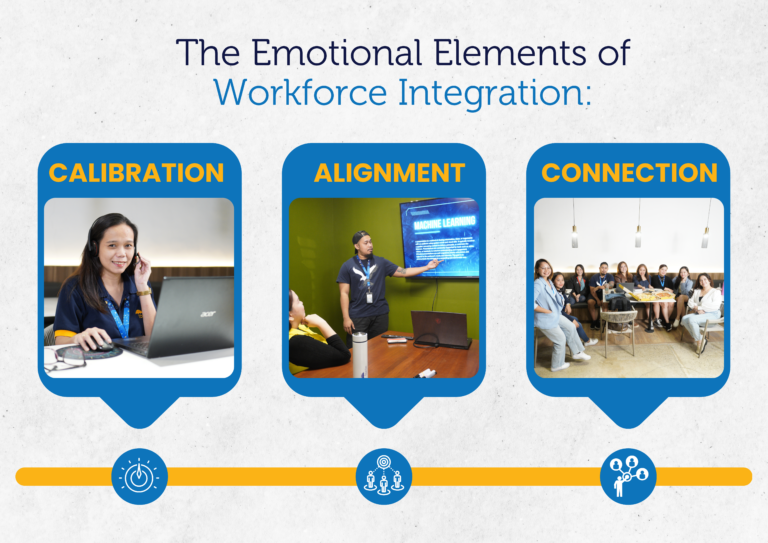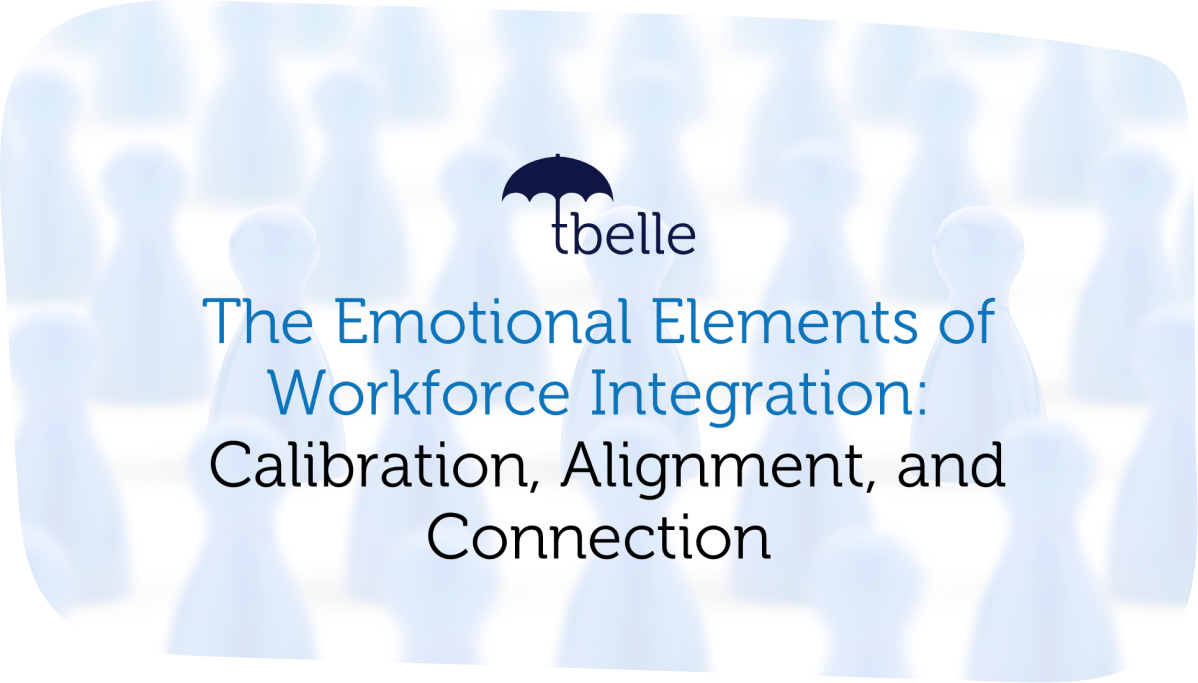
The integration of a workforce goes beyond simply ensuring that employees are informed about their duties. The emotional elements in managing a team have become pivotal to creating a thriving workforce, especially in a global setting. These components, when executed effectively, help to foster engagement, improve productivity, and align employees with the strategic vision of the company.
The emotional elements of workforce integration—calibration, alignment, and connection—are particularly important in driving both individual fulfilment and organisational success. In this article, we will explore these emotional elements in detail, examining how they contribute to a thriving workplace culture and sustained business growth.
Table of Contents
The Three Workforce Integration Emotional Elements

Workforce integration hinges on three critical emotional elements: calibration, alignment, and connection. Together, these elements form the emotional foundation that powers successful workforce integration.
In traditional terms, calibration refers to the process of fine-tuning systems to ensure accuracy and consistency. In the context of workforce integration, calibration involves aligning the workforce with the strategic goals of the organisation, ensuring that the skills and roles of the workforce are tuned to execute the strategic plan effectively.
This includes training and performance management to ensure efficient work toward shared objectives, aligning the workforce with the strategic goals of the organisation. This also involves adjusting and aligning an employee’s emotional responses to the organisation’s environment and standards values, allowing everyone to work efficiently towards the same objectives.
In the absence of this element, a host of issues can emerge. That is, when the workforce’s skills are not calibrated with the organisation’s strategy, employees may face confusion about their roles and responsibilities, leading to errors in execution and an overall decline in productivity. Without proper calibration, there can be gaps in skills or knowledge that prevent teams from meeting strategic objectives, resulting in frustration and demotivation.
This mismatch can also lead to wasted resources, inefficient processes, and a lack of cohesion within teams. Over time, the absence of calibration not only disrupts day-to-day operations but can also stall the organisation’s growth and ability to compete effectively in its market.

Traditionally, alignment refers to the process of arranging components in an optimal configuration to work together efficiently. In workforce integration, this is where the organisation’s strategy and purpose intersect, ensuring that the strategic plans not only aim for business success but also reflect the core values and mission of the organisation.
This element emphasises on the strategy and purpose of an organisation, where every action, decision, and initiative a company undertakes should align with its overarching mission, values, and purpose. Whether it’s operational processes, customer service protocols, or innovation strategies, everything should be consistently in tune with the company’s purpose.
In addition, this concept of alignment extends beyond organisational processes to practical aspects such as goal, role, and process clarity. A 2023 study highlights how these factors—goal clarity, role clarity, and process clarity—significantly contribute to organisational performance. The same study also reveals that the degree to which strategic alignment is implemented directly impacts the organisation’s overall success.
In workforce integration, this intersection focuses on connecting the workforce with the organisation’s purpose. Connection also represents the emotional bond employees share with their colleagues and managers. These emotional bonds foster collaboration and create a sense of belonging—which in turn makes their level of engagement increase, leading to higher productivity and job satisfaction.
A strong connection between the workforce and a company’s mission and purpose is crucial for cultivating a motivated and engaged workforce. When employees understand and resonate with the organisation’s mission, it deepens their emotional bonds with the company and their peers.
This alignment not only enhances collaboration and a sense of belonging but also significantly impacts engagement levels. In fact, a recent study reveals that 42.8% of employees state that their company’s mission moativates them, highlighting the importance of a clear and inspiring purpose in driving productivity and job satisfaction.
The Intersection of Calibration, Alignment, and Connection

While each emotional element plays a distinct role in workforce integration, they are deeply interrelated. Calibration enables better alignment, as employees who feel emotionally supported are more likely to understand and commit to company goals. Similarly, employees who are aligned with the company’s vision are more likely to build strong emotional connections with their peers and managers, which reinforces overall engagement.
According to research by Quantum Workplace, organisations that succeed in aligning and emotionally engaging their workforce experience tangible benefits, including increased profitability, lower absenteeism, and greater innovation. Highly engaged employees are not only more productive but also contribute to a healthier organisational culture, which leads to long-term success.
Why Workforce Integration is Key to Business Success
The emotional elements of workforce integration—calibration, alignment, and connection—are not just “soft skills” but crucial business strategies. When teams are effectively integrated, they can collaborate more smoothly, share knowledge freely, and align their efforts toward common goals.
According to a study by Stanford University, teams that work well together are 50% more productive, demonstrating that successful workforce integration directly translates into enhanced productivity and efficiency, ultimately driving the organisation’s success.
Workforce integration therefore, plays a pivotal role in fostering teams that work seamlessly together, which is essential for achieving business success. This integration results in teams that not only function cohesively but also excel in their performance.
Unlock the Potential of Your Workforce Today

We are living in a world where talent is increasingly mobile and employees are seeking purpose— and it’s important to remember that companies that invest in the emotional elements when integrating their workforce will stand out as leaders, both in employee satisfaction and business performance.
Emotional elements such as calibration, alignment, and connection are not peripheral to workforce integration—they are fundamental to creating a cohesive, productive, and engaged team. By prioritising emotional well-being, fostering alignment with strategic goals, and nurturing strong interpersonal connections, organisations can unlock higher levels of performance and satisfaction.










